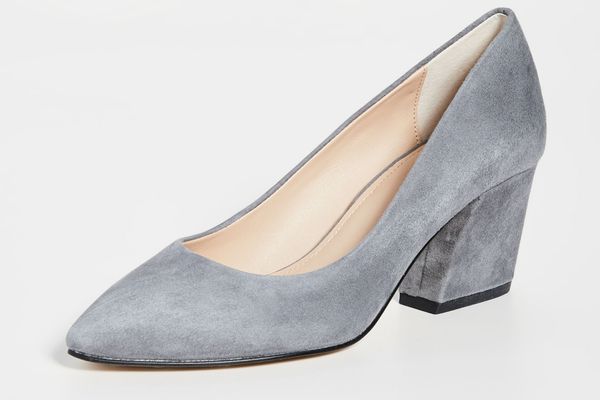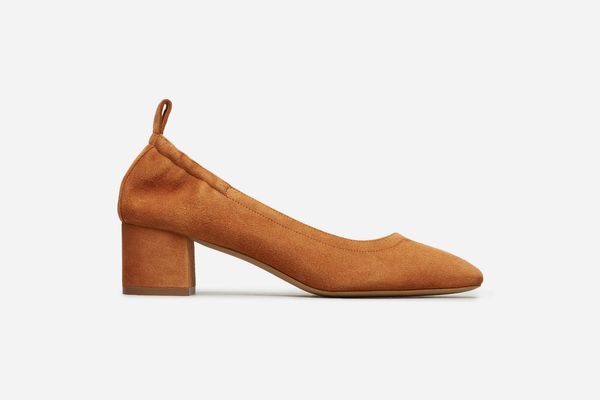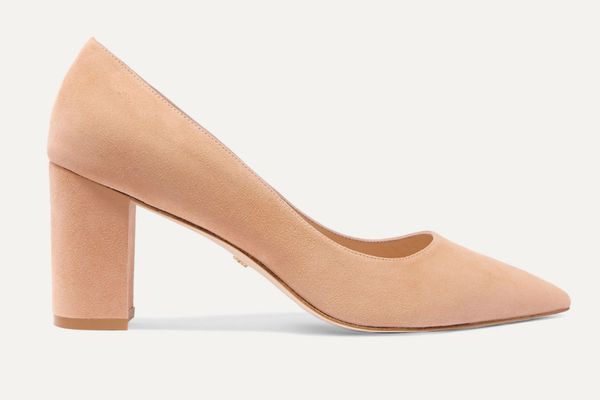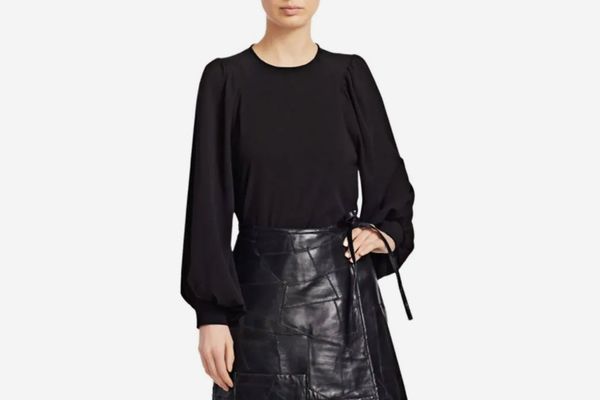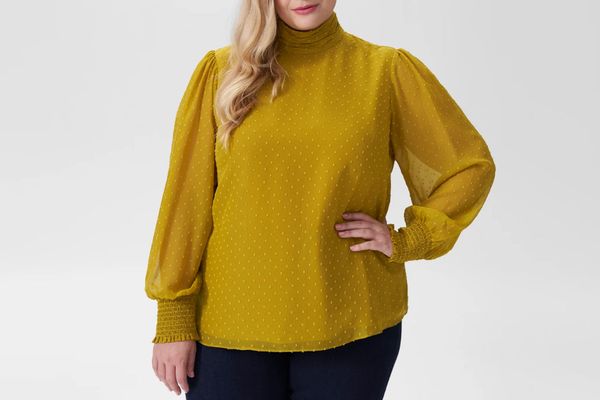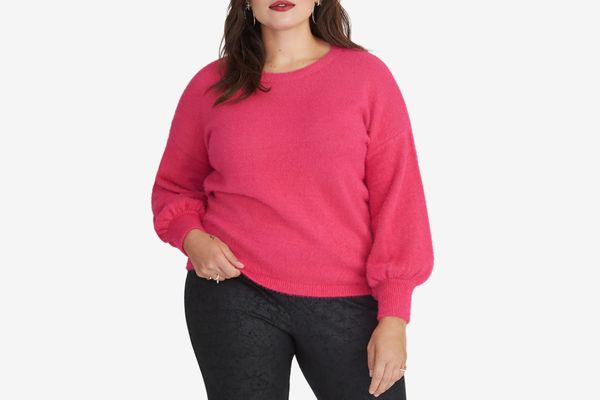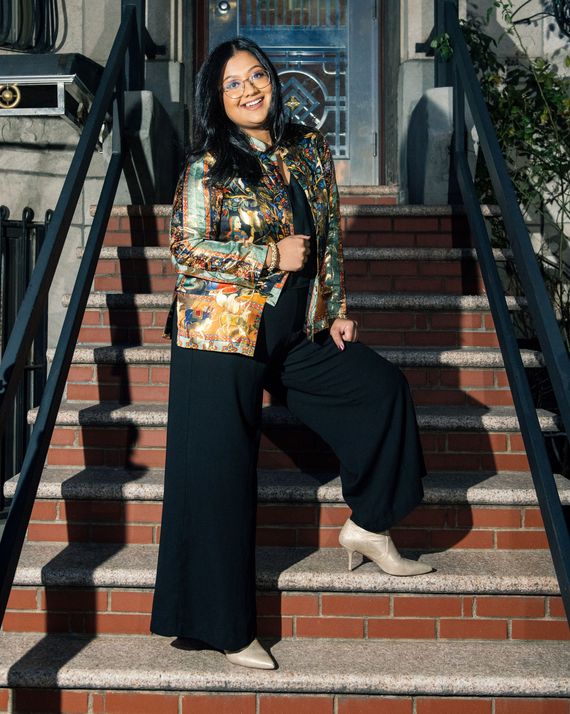
Shahana Hanif is a 28-year-old activist and organizer who used to run a blog about her chronic illness. Now, she’s running for New York City Council in the 39th District. She was spurred to become a candidate after helping a woman in her community — a fellow Bangladeshi Muslim — leave an abusive situation.
Women in politics frequently use fashion to communicate something larger than themselves. Think of Nancy Pelosi’s red “burn” coat, the Democratic women in matching suffragette white at last year’s State of the Union address, or, on the flip side, the deliberately icy blondes of Fox News and the Trump White House. Hanif knows this. As a young woman of color, she’s intentional about what she wears — because of comments she gets from veteran New York politicians, because she is a lupus survivor, and because each outfit is a chance to expand the definition of what “professional dress” looks like in progressive politics. We spoke with her about what she wears canvassing, shalwar kameez, and how she campaigns while managing a chronic illness.
On her everyday shoes: I’m always on the go, moving within and across Brooklyn and communities throughout New York, always organizing. I might start a day riding my bike, since I’m an active advocate for safe streets and designated bike lanes. Then, I might slip on my work loafers to meet with constituents to provide advocacy and support on pressing issues like domestic violence. I end the day at events or fundraisers in support of local community-based organizations, and for those I’ll change into block-heel pumps. Most days, the shoe change isn’t seamless, and I’m moving about in one pair all day.
On dressing to honor her roots: I often wear a midi dress paired with pants that can be dressed up with an embroidered, paisley-print shawl. During the warmer months, I’m likely to dress in colorful, printed cotton shalwar kameez, which is the original dress over pants and has roots in my Bangladeshi heritage.
I’m a first-generation Bangladeshi woman, born and raised in Kensington, Brooklyn, the largest Bangladeshi Muslim community in Brooklyn. As kids, my sisters and I played on our block in flowy, bright shalwar kameez and Payless sneakers. We’d get made fun of for dressing like this, but now these very cuts, textiles, and concepts have proliferated in Western fashion. Wearing shalwar kameez is an act of reclamation.
When I was growing up, I often felt shame around wearing shalwar kameez or other traditional Bangladeshi or Islamic clothing in non-Bangladeshi or Muslim gatherings. This shame is rooted in white supremacy and the standards of “professional”-wear. While working to expand the electorate to include women like me in legislative and political leadership, I find it critical to challenge the politics around fashion and professionalism. I don’t shy away from wearing a shari (sari) to public events.
Shop Block-Heel Shoes
On her personal style: It’s never been easy to dress. I was a chubby kid. Lupus severely impacted my body and weight. I’m between sizes 10–14. And the truth is, it’s hard to feel comfortable in my skin or when entering rooms with all eyes on me, because I’ve been taught larger bodies are not good bodies. But I’m living in a time with fat fashionistas and influencers wearing whatever they choose to, confidently and fearlessly. Big love to Ushshi, Nabela Noor, Megan Jayne Crabbe, Fabliha Anbar, and Leah Vernon.
It is critical for me to dress for the body that has survived going under the knife for two full hip- and left-shoulder-replacement surgeries. I’ve survived many months in the hospital, painful periods, medications, achy joints. Surviving and organizing in my community is an honor, and entering rooms tall and extra large, powerfully femme, and looking past the patriarchal bullshit is my aesthetic.
On her greatest challenge: Running for office with lupus is hard. I knew this, and it’s what paused my decision to run in the first place. Our electorate isn’t a space for politicos with disabilities, degenerative diseases, or mental-health issues. But it’s also true that health care is one of the top issues impacting women, people of color, and immigrants. I have worked day in, day out to help immigrants in the district access health care and better understand their health insurance. Some days, I experience severe imposter syndrome. I remind myself I’m capable and prepared. My ancestors are proud.
On fashion in politics: I love a powerful, monochromatic look, especially with a balloon-sleeve top. If you look at what I’m wearing on my website, I drew inspiration from shalwar kameez, many of which are monochromatic-outfit sets. You can’t see my shoes in that photo, but they’re also a shade of blue with a golden block heel.
When I’ve been on the trail, men in New York City politics have said things to me like, “You’re in a tough spot. You can’t win in this district,” or “I’m running — maybe down the line, you can too,” or “I was an idealist like you in my 20s. You should pace yourself.” Young women in politics are scrutinized for everything, from how we dress to whether we’re capable of running a city. I’m confident that I can do both well.
Shop Balloon-Sleeve Tops
Shahana wears Stuart Weitzman boots.
If you buy something through our link, New York may earn an affiliate commission.


